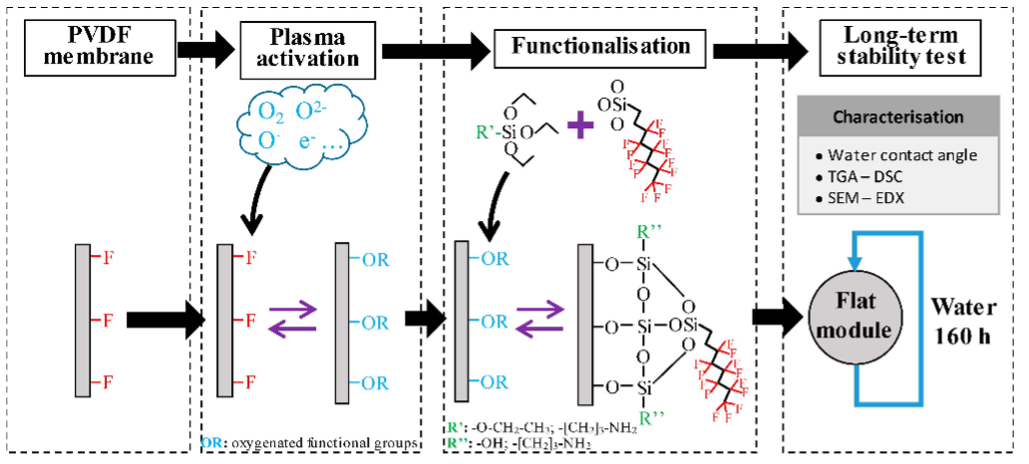The MATS group publishes an article on the progress in the improvement of hydrophobicity and stability of PVDF membranes by oxygen plasma treatment in collaboration with AIMPLAS.

Researchers from the MATS group, within the MethBrane project (TED2021-131276A-I00) funded by the Ministry of Science and Innovation and the IMMDEA/2020/015 project funded by IVACE+i, present their scientific article entitled "Stability of Superhydrophobicity and Structure of PVDF Membranes Treated by Oxygen Plasma in Vacuum and Organofluorosilanization", in the journal Membranes. This work has been conducted in collaboration with researchers from the Technological Institute of Plastics AIMPLAS and represents a significant advance in the development of superhydrophobic membranes of poly(vinylidene fluoride) (PVDF).
The study focuses on a surface treatment that combines activation with oxygen plasma in vacuum and subsequent functionalization with a mixture of silica precursors (TEOS or APTES) and a fluoroalkylsilane. This modification primarily acts on the membranes' surface, preserving the overall material properties.
Thanks to a statistical design of experiments, it was identified that the type of silica precursor is the most influential factor in the surface hydrophobicity. In particular, the use of APTES allowed achieving contact angles with water greater than 155°, remaining above 130° even after 160 hours of operation under moderate water flow.
Moreover, the optimal plasma treatment conditions led to a surface morphology with a pillar-like structure and increased porosity, without compromising the integrity of the membrane. These results demonstrate that the oxygen plasma pretreatment not only enhances the superhydrophobic performance of the membranes but also significantly increases their long-term stability compared to conventional treatments.
This advance reinforces our commitment to innovation in functional and sustainable materials and solidifies the fruitful collaboration with AIMPLAS.
This research was funded by the IMMDEA/2020/015 project funded by the Valencian Institute of Business Competitiveness - Generalitat Valenciana and the TED2021-131276A-I00 project funded by the Ministry of Science and Innovation (MCIN/AEI/10.13039/501100011033) and the European Union (NextGenerationEU/PRTR) (https://www.uv.es/iqmats/project/methbrane)
- The complete work can be accessed at the DOI link: https://doi.org/10.3390/membranes13030314
- Publication detail sheet on the MATS website
Bibliographic citation
Ramón Jiménez-Robles, Marta Izquierdo, Vicente Martínez-Soria, Laura Martí, Alicia Monleón, José David Badia. Estabil
Images:







